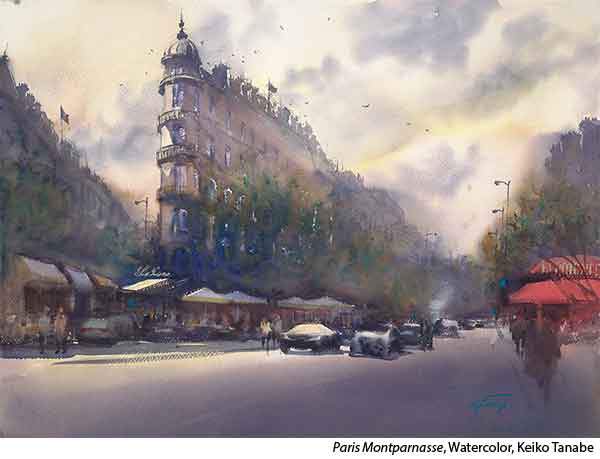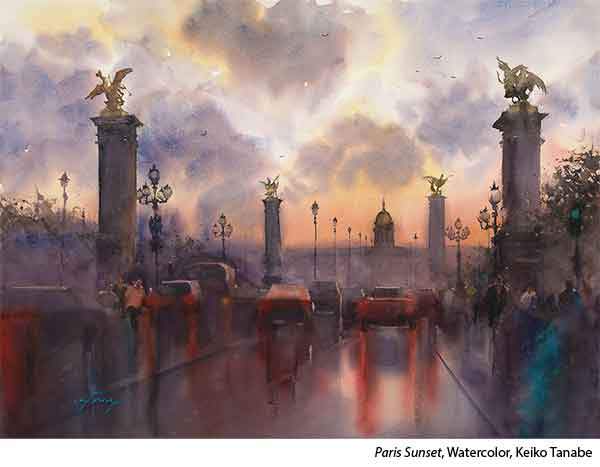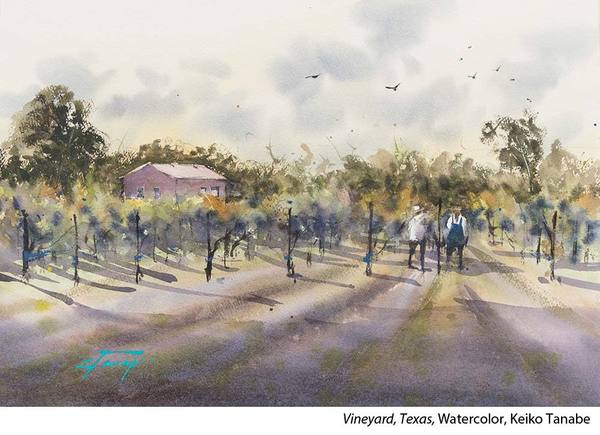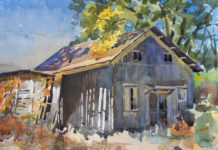
I believe that artwork is a mirror of what an artist feels about the subject, so it has to effectively communicate the artist’s vision through various techniques and components. What often triggers me to paint is not really the subject matter itself. When I see an interesting pattern of light and dark creating a certain mood or atmosphere, I stop and observe because it has an evocative quality and it speaks to me. When I see that and am moved by it, I know I have found something that could be an emotional basis as well as a design component to create a painting from.

As a landscape artist, I also strive to capture a sense of time and place. Especially when I am on location, I feel the place in all of my senses. The connection I establish with the subject is important. It allows me to feel I am part of the scene. It helps me delve into finding out what about it really speaks to me. As I always say, I don’t think I choose a subject; rather it chooses me. I just have to acutely aware when that happens. I think my painting is a mere response to that.

Painting en Plein Air
Being in the moment and staying focused – Nature has taught me how to do this and how to use this discipline when I paint outdoors. All that stimulates my senses and contributes to activating parts of my brain that might not be used if I was working in the studio. I like the way I can synthesize a painting this way as opposed to relying heavily on a visual reference source such as a photo.

Working outside trains me to paint faster. With the fast-changing light, I am forced to make quick decisions in the creative process. This is an important capability, especially with watercolor as this medium dries so fast and painting slowly means making too many strokes or hard edges visible if not taken care of skillfully.

My Creative Process
I generally work in three stages.
Preliminary stage: This is when I interpret the landscape and think of a way to translate it into a visual language. I try to visualize the finished painting and build a composition that communicates my vision. I also try to identify potential problems at this stage and think of solutions. Oftentimes, I make a small sketch and make a drawing for a painting based on the sketch.
First stage: I paint lights and establish base tones in my first wash. The focus is more on big shapes in the composition, not so much on smaller details. I lay down the wash, using a fairly large brush in a loose manner. An overall color feel is something I would like to show and use to unify all the elements.
Second stage: I tie darks together to create depth and a passage of light. To finish, I make smaller details more prominent, putting them in a dark tone or painting them negatively. I keep the details minimal, just enough to tell a story or suggest my intended narrative.
Watch Keiko Tanabe demonstrate her process in the video workshop, “Painting Sunlight With Keiko Tanabe.”

As I have gained experience, I have become better at predicting what will happen on the paper with each brushstroke. It opens a door of opportunity for me to explore more creative options. It allows me to be more proactive to a potential problem rather than responsive to the problem after it happens. Consequently, this ability enables me to paint with more confidence and speed.







